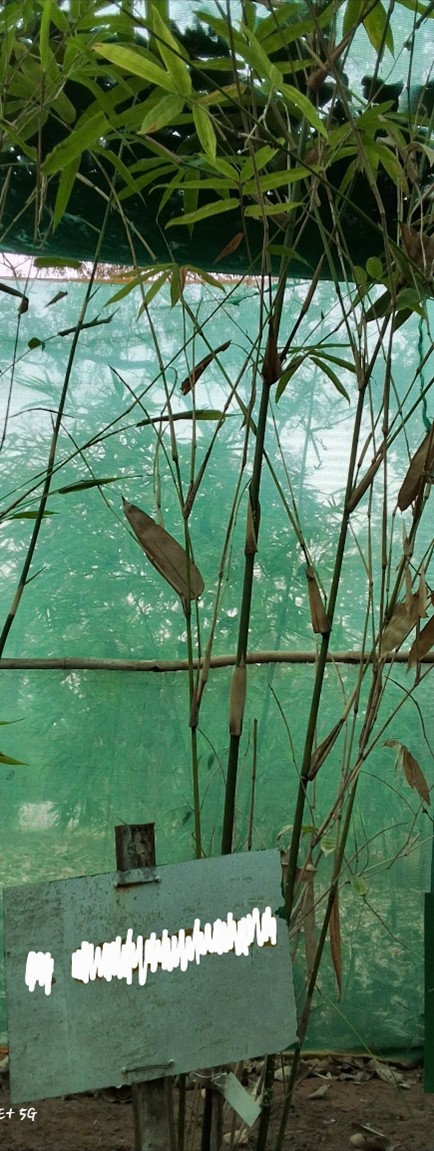Dendrocalamus calostachys

Dendrocalamus calostachys
Dendrocalamus colostachys commonly known as Calostachys Bamboo or Brown Bamboo, is a large, clumping bamboo species found in tropical and subtropical regions. The culms of this species can grow up to 15 to 20 meters in height with a diameter of 10 to 15 cm. The culm color starts as green and gradually turns light yellowish-brown as it matures, with internodes ranging from 25 to 45 cm. The culm sheath is green when young, turning brownish with age. The adaxial surface of the sheath is smooth and glabrous, while the abaxial surface is slightly hairy, with ciliate margins.
Dendrocalamus calostachys typically thrives at altitudes ranging from 300 to 1,500 meters and prefers well-drained, fertile soils such as loamy, sandy, and clayey types. It is typically found in tropical and subtropical forests, particularly along riverbanks and in moist valleys. Native to India, Myanmar, and parts of Southeast Asia, this bamboo species has also been introduced to other tropical regions for cultivation and ornamental purposes.
The leaves of Dendrocalamus calostachys are lanceolate to oblong-lanceolate, with a length of 18 to 30 cm and a breadth of 3 to 6 cm. The inflorescence consists of large, compound panicles with spikelets. The empty glumes are ovoid to lanceolate with acute tips and visible veins, while the flowering glumes are larger with smooth or slightly hairy edges. The stamens are exserted, with glabrous anthers and a hairy style. Flowering is sporadic and occurs in cycles every 30 to 50 years, with flowering recorded in parts of India, Myanmar, and Thailand.
Seed production of Dendrocalamus calostachys is rare due to infrequent flowering and low seed viability. It is primarily propagated by culm cuttings, clump division, offsets, and tissue culture.
This bamboo species is highly valued for its large size and strength, making it an excellent material for construction, including building structures, poles, scaffolding, and bridges. The culms are also used for making furniture, household items, and bamboo crafts. In addition, its long fibers make it an ideal material for the pulp and paper industry. The young shoots are edible and widely consumed in Southeast Asia. The dense wood of Dendrocalamus calostachys is used as a source of fuel in rural areas. Its dense root system is also effective in preventing soil erosion, and it is often planted in erosion-prone areas to stabilize the soil.
Listen Audio:
Need assistance? BRTC Faculty